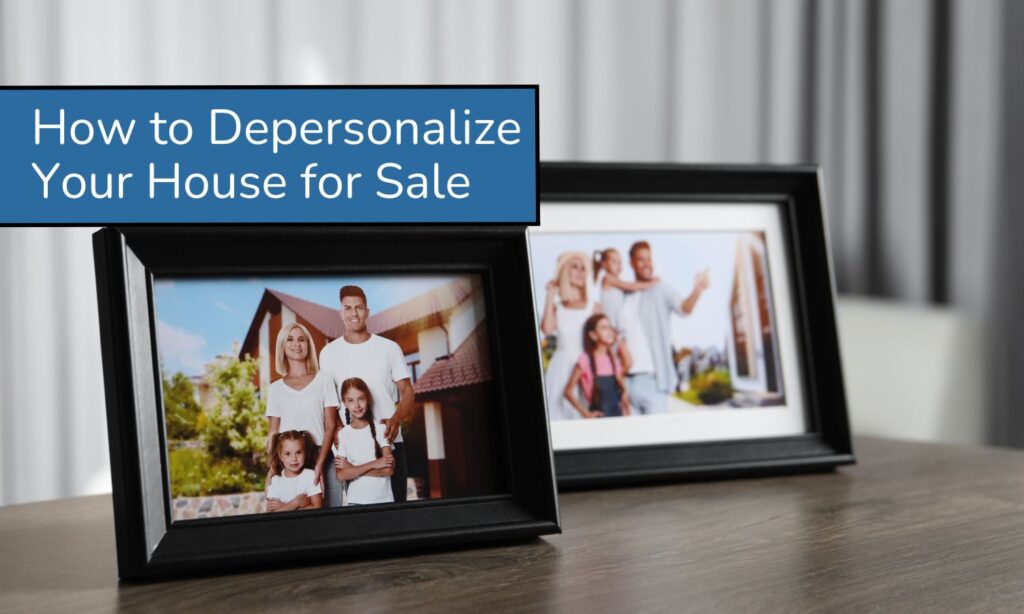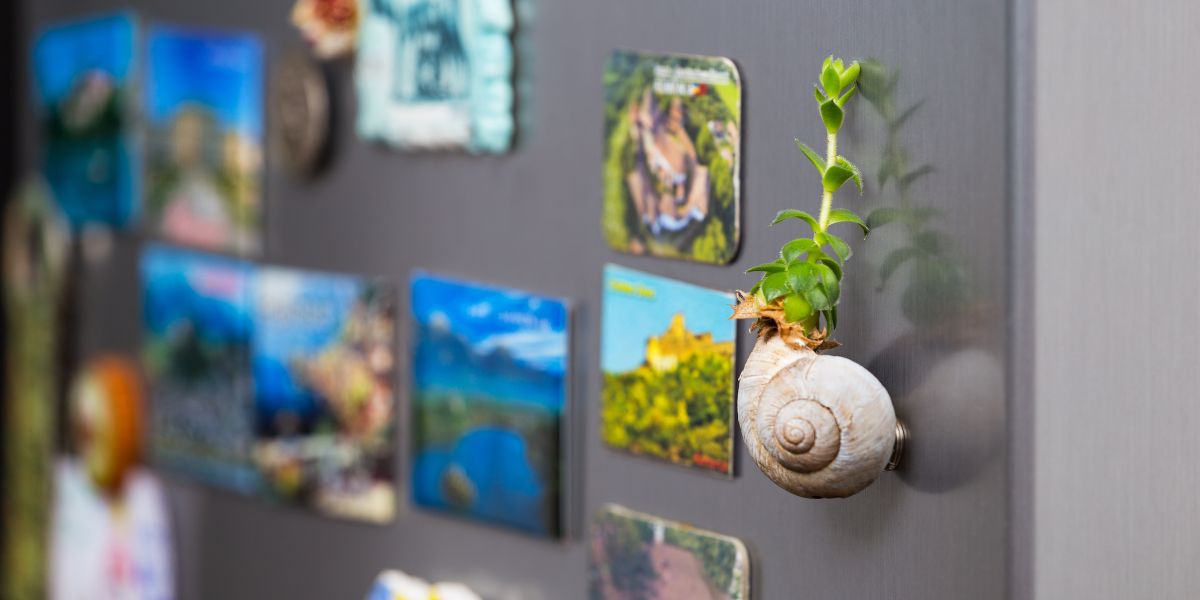Many experts say that you need to depersonalize in order to sell your house faster. You can try to look at it from a different perspective. Think: no clutter; warm color palettes; soft textures and small bursts of color.
What you are giving them is an idea of how a home might be used, and not how it is currently being used. Let’s tackle the worst offenders in your home one at a time using techniques and DIY projects.
Depersonalize these three major areas of living
Home staging and design go hand-in-hand with depersonalizing a house. Home staging involves adding décor and rearranging furniture to make the house look irresistible in walkthroughs or listing photos. It all starts with a white canvas.
Leave your personal experiences outside the house, and let the professionals in. Your Realtor and stager will be working together to get you the best price for your home.
You may have set a date for listing your house and you need to make sure it is ready to show by this deadline. Knowing where to concentrate your preparation efforts will help you if you are running out of time.
According to research, the three rooms that buyers are most interested in (and Realtors think are the important spaces to stage), are the living room; the primary bedroom and the kitchen. You should at least depersonalize these three rooms before opening the door to potential buyers.
Store memorabilia, religious and collectible items
Buyers must see that the majority of your belongings are gone. Start a packing pile, a trash pile, and a giveaway pile.
When you are deciding which items to remove from your home as part of the neutralization process, keep in mind three words: sports, hunting, and religion.
You can display the deer’s head to welcome buyers if you are selling a cabin. When showing a suburban single-family home to people who might not know how to use a rifle you will want to remove your prized antlers. You can also lock up your shotguns.
The same goes for religious décor and items. You want to make your home appealing to a wide range of buyers, regardless of how important your faith is. Remove any religious statues and relics and replace them with neutral items like art or plants.
Any sports memorabilia or special collections that you may have on display should be removed as well.
Remove wallpaper and paint over bright accent walls
Does your wallpaper have yellowed edges and flake off? It may have a strong pattern, look like a nursery, or resemble the garden of an old hotel.
Wallpaper is generally a no-no for home buyers today. They will not only see busy patterns as an eyesore but also consider it a project that they have to complete once they are in their new home. Brightly painted walls can evoke similar feelings in buyers.
Neutral walls allow buyers to later add their personal touches. The buyer can visualize where they want to hang family photos, wall accents and light fixtures. It’s a step less in the remodeling process.
98% of the top real estate agents agree that neutral colors are most popular among buyers.
Cover up furniture that is patterned or bulky and reflects your specific taste
Living room and dining rooms are two areas where the wrong furniture could create a mental roadblock.
The living room is where most families spend their time, so it’s important to have the furniture arranged in a way that makes the space comfortable and inviting for buyers.
If you want to keep older furniture, either remove it and store it in a storage unit (if that’s what you plan on doing) or cover the furniture with neutral fabrics. Slipcovers can be used to cover up worn out furniture and patterns. You can find a wide selection of furniture covers online. There are neutral, contemporary, and washable ones and they’re easy to slip on.
The nicks on your dining room furnishings will remind potential buyers that it’s still your home. You can restore it to its original condition with a few DIY tricks and some TLC. Furniture polish can restore shine. Reinforce hardware to stop it from rocking or swaying. Add a fresh coat to paint any chips. Chair cushions can be a great way to cover any stains on your chairs.
These small projects can add a few years to the age of your furniture and help buyers envision their own family dinners around the table without having it remind them of its old appearance.
Remove photos from refrigerator, dressers and walls
You can bet that buyers will be distracted by the photos of family members, friends and pets on every wall or surface in your house. They may even find it difficult to imagine their home as theirs.
Take down your personal photos, store them safely, and you will make great progress in depersonalizing.
Add framed artwork, and small home décor accents for a warm atmosphere that buyers will relate to.
Take down all the lawn ornaments, door decorations and other personal items
After you have depersonalized your home inside, it is time to move outside.
The first thing buyers notice when they visit your property is the curb appeal, landscaping, and front entrance. If you don’t care about the first impression that buyers get, they won’t notice the cobwebs and broken plastic flamingo on your steps.
You can avoid repelling buyers by ensuring that your lawn is in good condition.
- Your holiday décor should be neutral to avoid limiting your buyer pool.
- Hide any toys your children left on the lawn in the garage, or the toy box.
- You may like ceramic deer and lawn gnomes, but not everyone will. Keep the lawn and bushes well-trimmed.
You only need a brand new doormat, and freshly-painted door in order to ensure that your home leaves a lasting impression on visitors without overwhelming them with your style.
How to bring warmth and charm back into your depersonalized house
Depersonalization can help you sell your house to a buyer who is looking for their next home.
But depersonalizing your home shouldn’t make it completely lifeless and barren. The house still needs to feel like home.
It may seem strange to be asked to move everything out and then bring other things in. But that’s what the buyer wants. Do not take it personally. You may have amazing style, but buyers want to see certain things to be interested in a home.
The things you put back into the mix should help buyers envision their own lives there. Adding textures, warmth and layers to a room or bedroom that feels lived in, but not by you.
This means placing rugs, accent pillows, and throws in the right spots to create a neutral, yet inviting, space. Area rugs, fluffy pillows, plants, spice racks and flowers can make a dining room or kitchen feel more welcoming.
Depersonalizing your house is a very personal experience
You now know that depersonalization allows the buyer to fill in the blanks and create their own vision for your home.
You may find that this process is more difficult than expected because you have lived in your house for many years. It’s possible that you have emotional attachments that cloud your judgment. A second or third set of eyes can help you see the bigger picture and determine what items should be removed.
A mistake here or there will be noticed as buyers form their perceptions in the first thirty seconds of walking in. What you want is to get them to spend a lot more time picturing themselves and their life in space.
You need to work with an agent who has seen a lot of different homes and styles. They can also be your voice of reason. Ask them about their staging experience or credentials, and if they are able to bring in stagers through their network.
Take it one family photo and a flower-covered loveseat at a time. Don’t take it personally if your agent tells you to remove it from sight.



